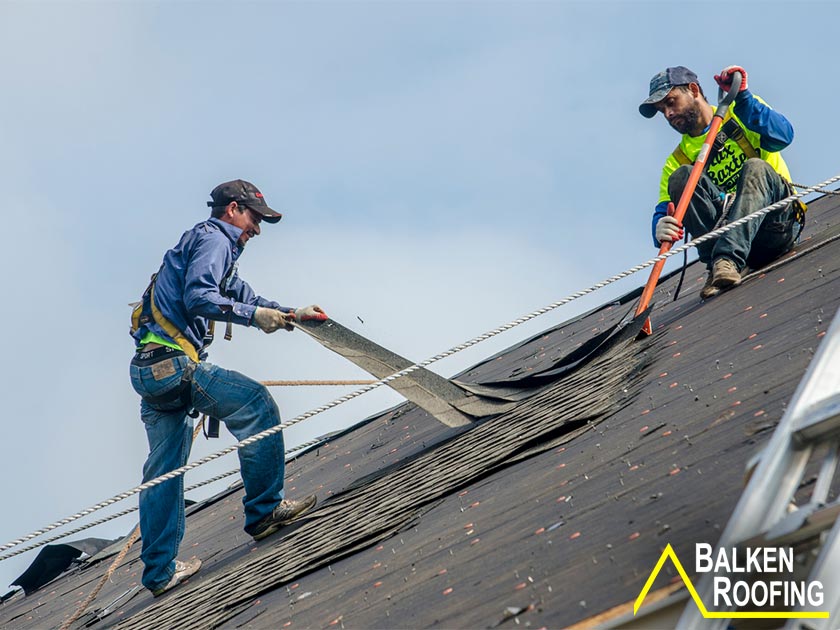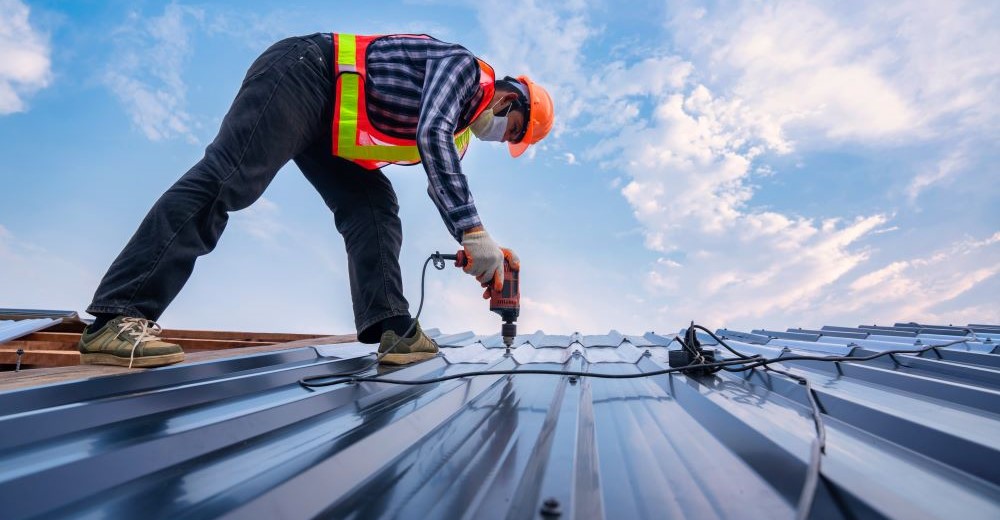How often should you schedule Roof Maintenance?
Necessary Tips for Effective Roofing Maintenance From Leading Roof Experts
Keeping a roof is important for the long life of a home. Leading roofing experts worry the significance of regular assessments to capture issues early. Additionally, appropriate upkeep methods can prevent expensive repair work down the line. House owners commonly neglect straightforward jobs that contribute to a roofing's wellness. Recognizing these crucial tips can make a significant distinction. Numerous might question what details methods are most effective.
Routine Evaluations: Secret to Early Issue Detection
Although lots of property owners may ignore their roof coverings, routine examinations play a necessary duty in identifying possible issues before they escalate right into expensive repairs. A comprehensive assessment can reveal indicators of wear, such as missing shingles, cracks, or rusted flashing. These apparently minor troubles can bring about significant leaks, architectural damages, or mold and mildew growth if left unaddressed.
Experts suggest performing inspections a minimum of twice a year, ideally in the springtime and loss. This aggressive method allows homeowners to capture issues early, making certain the longevity of the roofing system. Additionally, after extreme weather condition events, such as tornados or hefty snowfall, an inspection is vital to evaluate any type of resulting damage. Normal examinations not only improve the roofing's lifespan however likewise give tranquility of mind, knowing that the home is well-protected. By prioritizing this element of maintenance, home owners can avoid unexpected expenditures and maintain the integrity of their residential property.
Maintain Gutters and Downspouts Clear
Normal upkeep of gutters and downspouts is necessary for stopping water damage to a home. Clogged up gutters can bring about overflowing water, which may damage the home siding, roof, and foundation. To keep peak function, house owners should regularly examine and clean gutters, especially during loss when leaves and particles accumulate.
Utilizing a tough ladder, people should eliminate any type of clogs, assuring that water moves easily via the system. It is recommended to check downspouts for blockages as well; a blocked downspout can cause water to support and overflow.
Additionally, property owners ought to verify that gutters are firmly attached and properly sloped to direct water towards downspouts. Setting up seamless gutter guards can additionally aid minimize debris accumulation and minimize maintenance frequency. By keeping rain gutters and downspouts clear, homeowners can shield their home from expensive water damages and expand the life expectancy of their roof.
Trim Overhanging Branches
To assure the longevity of a roofing, home owners should prioritize cutting overhanging branches that posture a threat to their roof. Branches can trigger significant damage via different methods, including direct contact during tornados or heavy winds, which may lead to scrapes or leaks in roof covering products. Additionally, overhanging branches can assist in the growth of moss and algae, as they supply shade and dampness retention, jeopardizing the roof's honesty.
Routinely examining the distance between tree limbs and the roofing system is vital. Home owners need to aim to keep a secure clearance of at least 6 feet to lessen prospective dangers. Making use of specialist tree solutions can assure safe and correct cutting, preventing unexpected damage to the home. By proactively handling tree growth, property owners can safeguard their roof coverings, enhancing their life-span and reducing future maintenance prices. In conclusion, routine branch cutting is an indispensable aspect of reliable roof covering upkeep.
Look for Indicators of Damage
Checking a roofing system for indicators of damage is crucial for preserving its structural stability and longevity (Roof Replacement). House owners need to perform visual checks a minimum of two times a year, concentrating on usual signs of concerns. Missing, broken, or curled shingles can signify damage, while staining may indicate water damages or leakages. Furthermore, house owners should examine blinking around smokeshafts, vents, and skylights for rust or spaces, as these locations are susceptible to leakages
Rain gutters and downspouts need to be removed of particles, as clogs can bring about water merging and succeeding roof covering damages. Interior evaluations are also essential; water spots on wall surfaces or ceilings might suggest roof covering leakages. Additionally, mold and mildew development in attic rooms can indicate long term dampness direct exposure. By consistently looking for these signs of damages, home owners can attend to issues early, protecting against expensive fixings and making sure the roofing system remains in prime condition.
Maintain Correct Air Flow
Appropriate air flow is necessary for maintaining a healthy roofing system and extending its lifespan. Adequate airflow prevents dampness accumulation, which can bring about mold and structural damage. Additionally, changing ventilation according to the seasons can optimize power efficiency and comfort within the home.

Relevance of Air movement
While lots of home owners might overlook the relevance of airflow, maintaining correct ventilation is essential for the longevity of a roof. Adequate air movement aids regulate temperature level within the attic room, protecting against heat accumulation that can harm roofing materials. This policy likewise adds to energy effectiveness, minimizing the demand for extreme cooling throughout warm months. In addition, correct air flow helps in distributing air uniformly, minimizing the threat of wear and tear on roof components. Professionals advise mounting vents tactically to promote a continual flow of air, which aids in maintaining an ideal atmosphere. Home owners need to focus on airflow when conducting roof maintenance, making sure that their roofs continue to be useful and undamaged for years to come.
Avoiding Dampness Build-Up
Keeping ample air flow not just controls temperature level however also plays a vital duty in preventing dampness accumulation within the attic area. Proper ventilation permits for the constant flow of air, which assists to remove excess humidity that can gather from numerous sources, consisting of day-to-day activities and seasonal modifications. Without adequate airflow, wetness can cause mold growth, timber rot, and damages to insulation, endangering the architectural integrity of the roof covering. Installing vents, such as soffit and ridge vents, can enhance air blood circulation, making certain that moist air is expelled while fresh air is attracted. Routinely examining and cleaning these vents is essential to preserving their efficiency, therefore safeguarding the roofing system and prolonging its life expectancy.
Seasonal Ventilation Adjustments
Seasonal changes considerably impact the ventilation requirements of a roofing system. In warmer months, enhanced temperature levels can trap heat in the attic, causing prospective damages and greater power costs. Adequate air flow permits heat to run away, advertising a cooler interior environment. Alternatively, throughout colder months, appropriate ventilation stops wetness accumulation from snow and ice, which can result in mold and mildew and architectural issues. Roof professionals suggest readjusting air flow systems seasonally, consisting of making use of ridge vents and soffit vents for peak air flow. Normal inspections should assure that any obstructions, such as particles or insulation, are cleared. By maintaining proper ventilation throughout the year, house owners can safeguard their roofing systems and boost power efficiency.
Clean Your Roof Covering Surface Area
Cleansing the roofing system surface area is vital for maintaining its stability and extending its lifespan. A clean roofing not just enhances the home's visual allure however additionally protects against the build-up of moss, particles, and algae, which can add to damage. Routine cleansing assists to get rid of contaminants that might trap wetness, leading to prospective leaks and architectural damage.
Homeowners should take into consideration utilizing a soft-bristle brush or a pressure washing machine with a low setting to delicately remove dust and growths from the roof. It is essential to prevent harsh chemicals that can harm roofing materials. Furthermore, safety and security precautions should be taken; utilizing a tough ladder and using appropriate gear is necessary to prevent crashes.

Schedule Specialist Fixings and inspections
Regular roof upkeep includes greater than simply keeping the surface clean; it also requires professional inspections and repair services to ensure lasting sturdiness. Involving a certified roof professional for regular evaluations is necessary, as they can recognize possible concerns that might go undetected by the inexperienced eye. These specialists possess the experience to examine the roofing system's problem, looking for indicators of wear, damages, or leakages that might check this rise into costly repair services if left unaddressed.
Arranging these inspections a minimum of two times a year, ideally in springtime and fall, assists confirm that any essential repair work are performed immediately. Additionally, a specialist can advise safety nets to expand the roofing's life-span. House owners ought to focus on these assessments as part of their general maintenance method, comprehending that timely treatments can secure their investment and enhance their home's value. Inevitably, aggressive care with specialist solutions is essential to achieving a reputable and durable roof system.
Regularly Asked Questions
How Often Should I Change My Roof covering?
The read what he said regularity of roof covering replacement depends upon materials and environmental variables. Usually, asphalt roof shingles last 20-30 years, while steel roofs might sustain 40-70 years. Routine assessments assist establish the ideal timing for replacement.
What Are the Best Products for Roof?
The most effective materials for roof covering include asphalt tiles, floor tile, slate, and steel. Each material uses one-of-a-kind advantages, such as resilience, appearances, and power efficiency, enabling homeowners to choose according to their specific needs and preferences.
Can I Execute My Own Roof Covering Fixes?
The inquiry of executing one's very own roofing repair work often arises (Roofing Company). While some individuals might possess the skills, it is normally recommended to get in touch with experts to assure safety and appropriate adherence to building regulations and criteria

How Do Weather Influence Roof Upkeep?
Weather problems considerably affect roofing system upkeep. Severe temperatures, heavy rains, and snow build-up can trigger damages, while normal evaluations throughout moderate climate guarantee timely repairs, preserving the roof's integrity and prolonging its life expectancy efficiently.
What Is the Ordinary Life-span of a Roofing system?
The average life expectancy of a roof differs considerably based upon materials and environmental variables. Usually, asphalt roof shingles last around 15 to thirty years, while metal roofings can sustain 40 to 70 years with appropriate maintenance and treatment.
Lots of home owners might ignore their roofs, normal assessments play a vital function in determining possible problems prior to they escalate into costly repairs. To ensure the longevity of a roof covering, house owners must focus on trimming overhanging branches that position a threat to their roofing system. By proactively handling tree growth, homeowners can secure their roofs, boosting their life-span and lowering future maintenance expenses. Evaluating a roofing for try this website signs of damage is essential for preserving its architectural integrity and durability. While numerous property owners might neglect the relevance of air flow, keeping appropriate ventilation is vital for the durability of a roof.